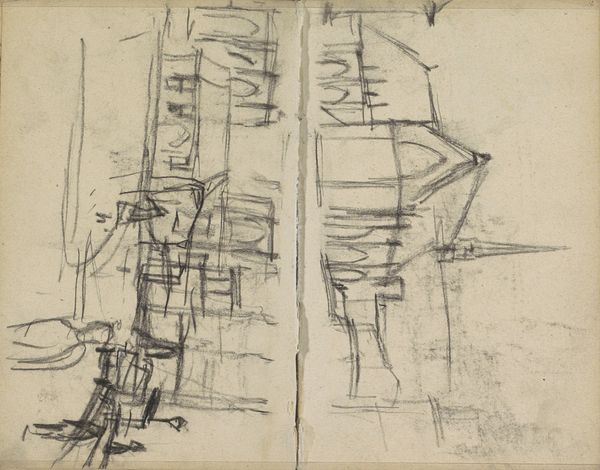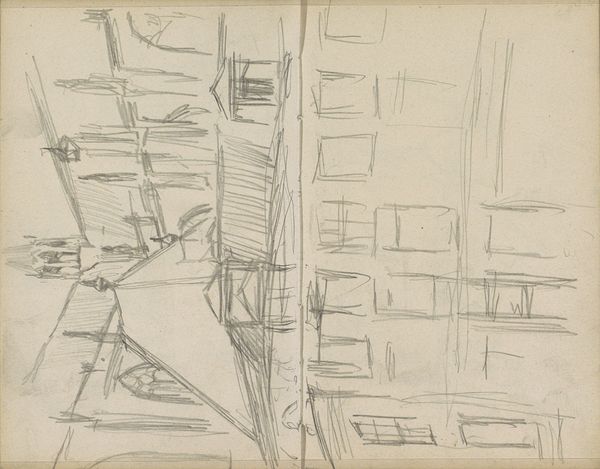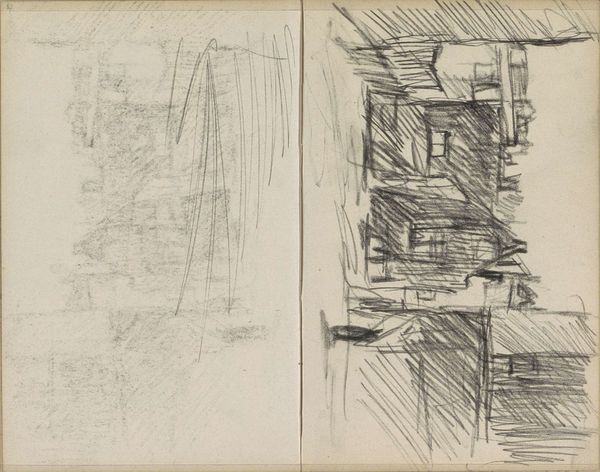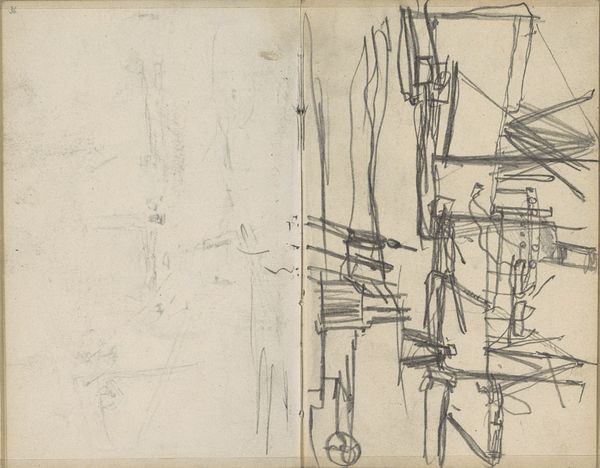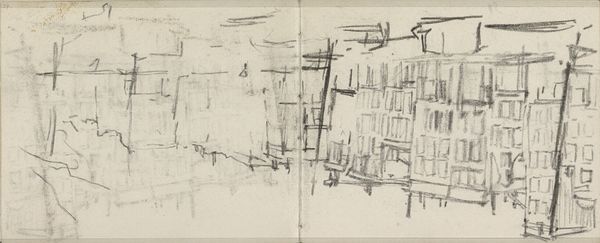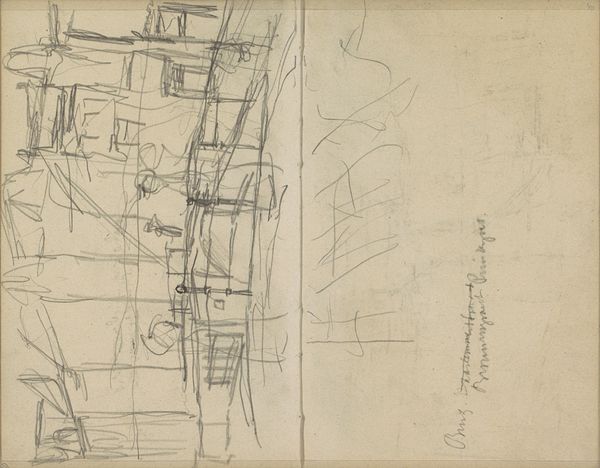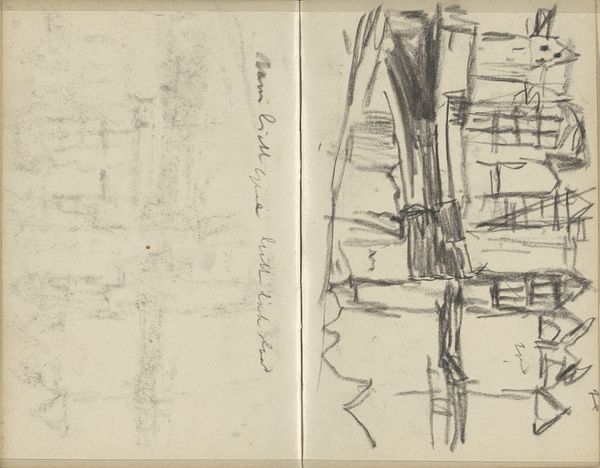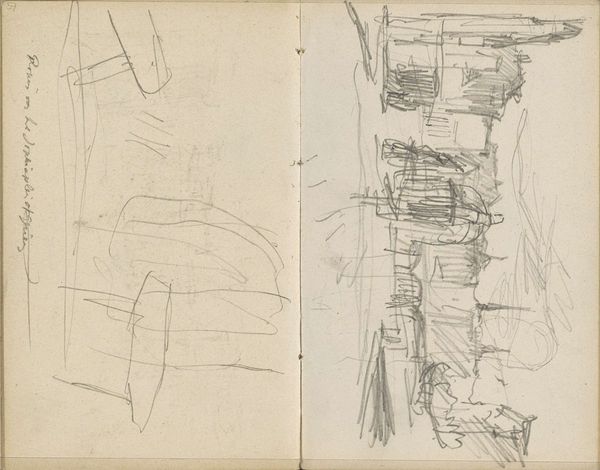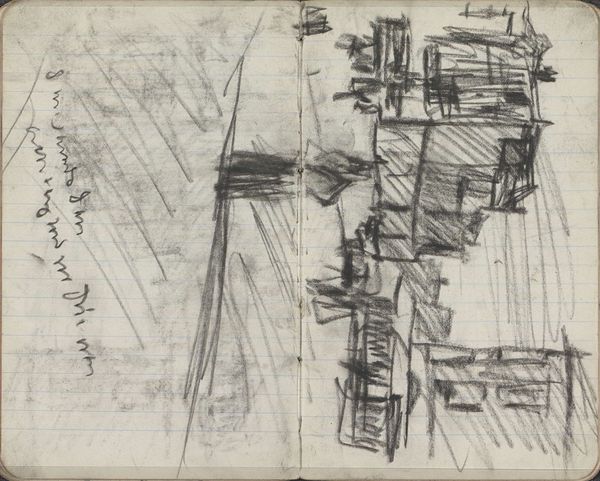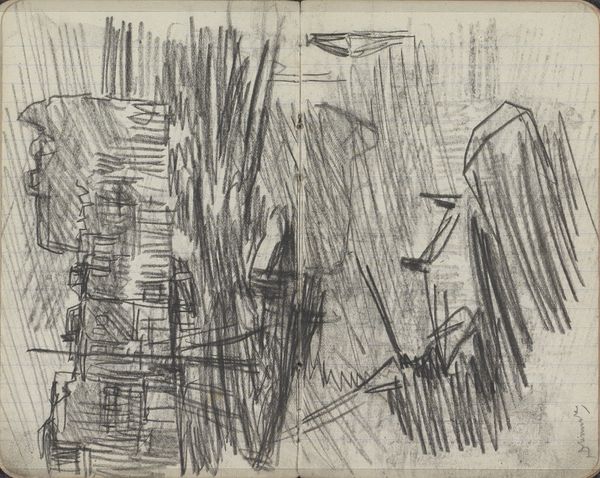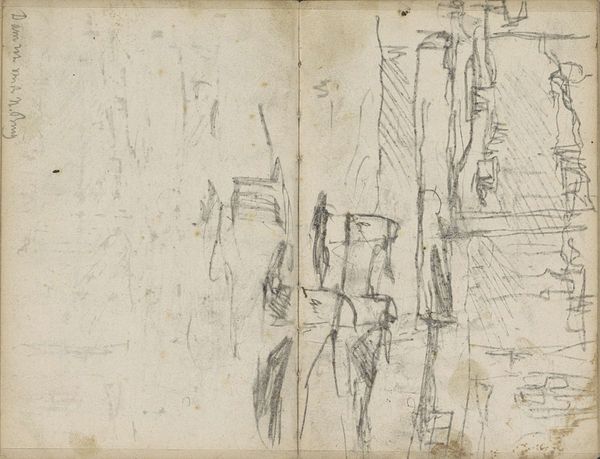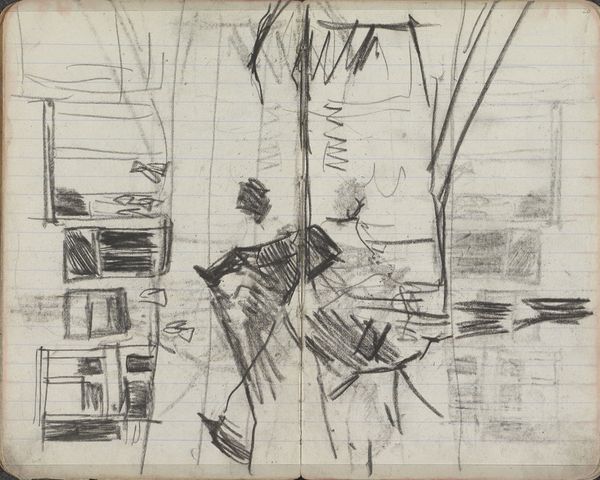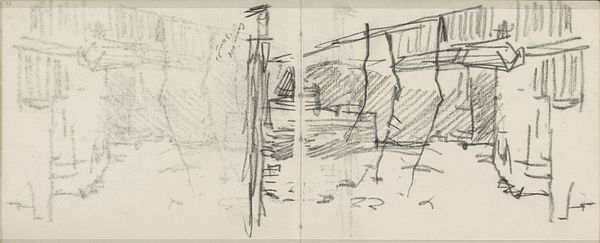
Copyright: Rijks Museum: Open Domain
Editor: Here we have George Hendrik Breitner’s "Gezicht op het Rokin te Amsterdam," made with pencil on paper sometime between 1902 and 1914. It almost looks like an unfinished idea. I'm curious, what stands out to you in this piece? Curator: It's less about the idealized vision of Amsterdam, and more about the process of *seeing* Amsterdam at the turn of the century. This sketch offers a glimpse into Breitner's method. The materiality of pencil on paper speaks volumes; these readily available, inexpensive materials were tools of observation and preliminary investigation. What kind of labor do you imagine went into the buildings themselves? Editor: Well, it seems like a fast, preliminary study, which doesn't seem very laborious in its own right. The final structures would require much labour, obviously. The juxtaposition between the drawing's ease and the implied effort in constructing those buildings is pretty strong. Curator: Exactly. The Rokin, then undergoing significant changes in its built environment, was reflective of Amsterdam's shifting economic landscape. This sketch isn't just about the 'pretty view' of the Rokin, it hints at the changing social fabric, expressed through the rapid industrialization and its impact on the cityscape's means of production. What would ordinary Amsterdammers be seeing daily as the buildings arose? What did Breitner notice as a pedestrian sketching there? Editor: So, it's almost like the sketch itself embodies the fleeting, changing nature of the city at that moment. Seeing artmaking as *labor* is a different perspective to embrace and apply when looking at all kinds of works! Curator: Precisely. It makes us reconsider not just the final image, but the socio-economic processes that birthed it.
Comments
No comments
Be the first to comment and join the conversation on the ultimate creative platform.
